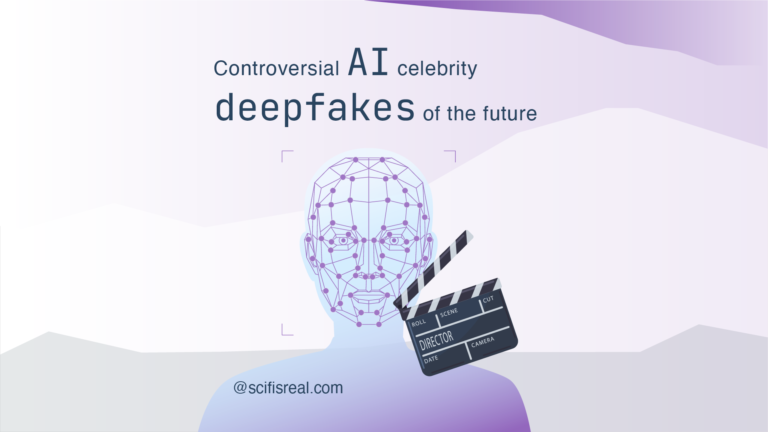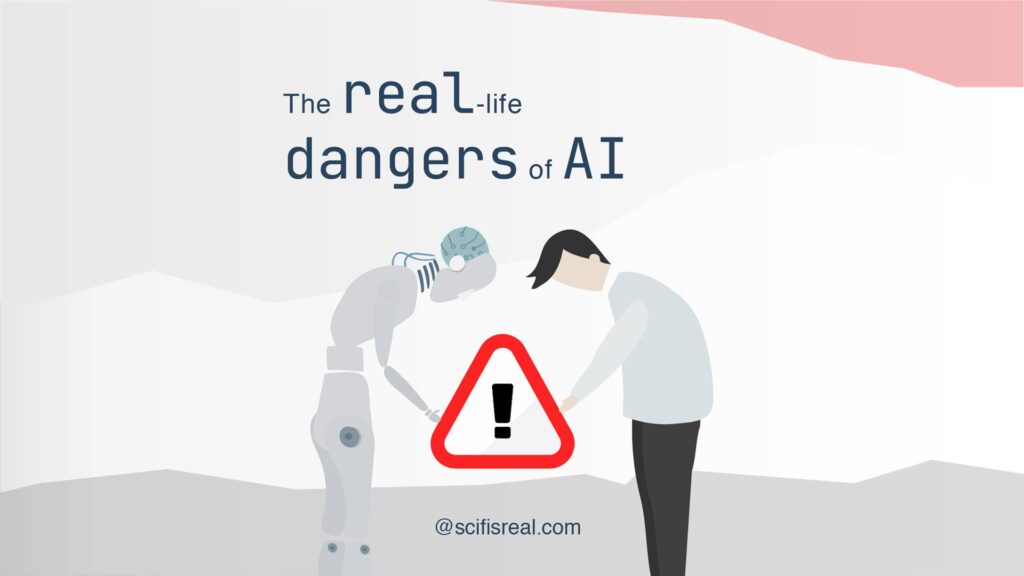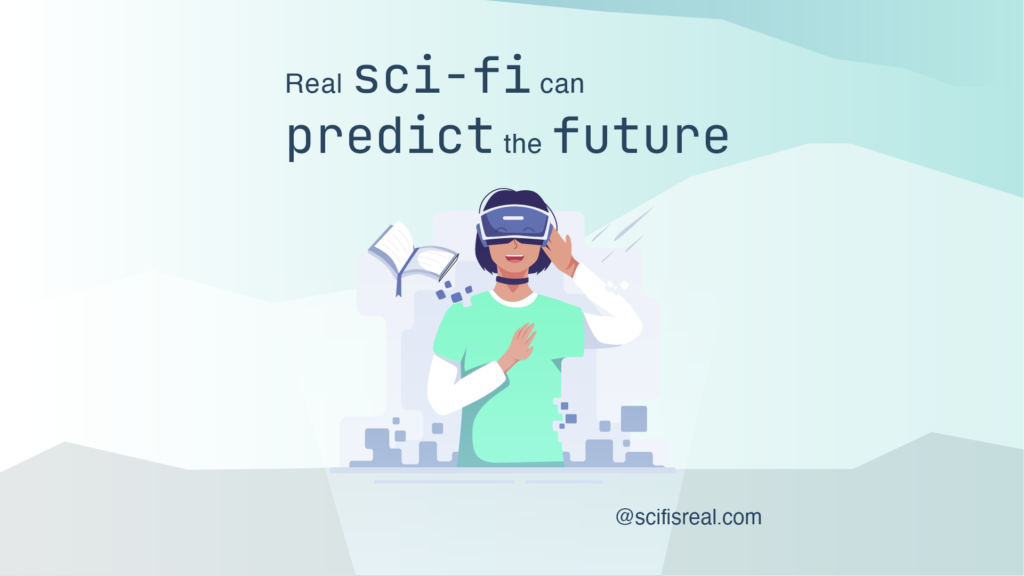Controversial AI celebrity deepfakes of the future

The rise of deepfake technology has raised concerns about the blurring of lines between reality and fiction, especially in the realm of movies and other forms of media. Deepfakes involve the use of artificial intelligence to manipulate or generate visual and audio content that appears authentic but is, in fact, digitally created.
With the recent release of the much anticipated 5th installment of the Indiana Jones blockbuster, the use of deepfake technology has become mainstream. We see young Indiana (Harrison Ford) age regressed by AI to his younger self as if it were the 1980s and the result is very convincing.
Not everyone is excited, however, as actors face a controversial threat by this new technology that already spiked an actor’s strike in Hollywood in June 2023, requiring regulations to be made about the use of AI, compensation, and consent.
But what exactly is a deepfake and deepfake technology?
💡 A deepfake is a type of synthetic media that is created or altered using artificial intelligence (AI) techniques, particularly deep learning algorithms. The term “deepfake” is a combination of “deep learning” and “fake.” Deep learning involves the use of neural networks with many layers (hence “deep”) to analyze and learn patterns from data.
In the context of deepfakes, the technology is primarily used to manipulate or generate visual and audio content that appears authentic but is, in fact, digitally created. Deepfake algorithms can be trained on large datasets of images or videos of a particular person, enabling them to learn the facial features, expressions, and voice patterns of that individual. Once trained, the algorithm can then generate new content, such as videos, where the likeness and voice of the person are manipulated or entirely replaced.
Here are two common types of deepfakes:
- Visual Deepfakes: These involve the manipulation of visual elements, such as faces, in videos or images. The algorithm can alter facial expressions, lip movements, and other features to make it seem like a person is saying or doing something they never did.
- Audio Deepfakes: These focus on manipulating or generating audio content. The algorithm can mimic a person’s voice, allowing it to create realistic-sounding speech that may not reflect the actual words spoken by the person during the training phase.
While deepfake technology has some positive applications, such as in filmmaking or digital effects, it has also raised concerns due to its potential misuse. Deepfakes can be used to create fake news, misinformation, and to deceive people by making it appear as though someone is saying or doing something they never did. This has led to ethical and privacy concerns, and there are ongoing discussions about the responsible use of deepfake technology.
Deepfakes in TV and cinema
In the context of movies, the controversy of using AI-generated actors to replace or enhance human actors has already stirred the entertainment business. This could involve creating entirely synthetic characters or using AI to manipulate the appearance and performance of real actors.
The ethical implications of deepfakes and AI-generated content have been a topic of debate. The potential for misinformation, privacy concerns, and the ability to convincingly fabricate events or statements have raised alarms. It’s important for both creators and consumers of media to be aware of the capabilities of such technology and to critically assess the authenticity of the content they encounter.
The consequences of deepfake technology and its unethical, unauthorized use were also addressed in one of the recent episodes of the popular, thought-provoking science fiction TV series Black Mirror (season 6, episode 1).
Are there any benefits to the use of deepfake technology in cinema?
While deepfake technology has raised ethical concerns, there are also potential benefits and creative applications in the realm of cinema. Some of the positive aspects include:
- Digital recreation of historical figures: Deepfake technology could be used to digitally recreate historical figures, allowing filmmakers to bring past events and personalities to life in a more convincing and immersive way. This could enhance storytelling in historical films.
- Facial rejuvenation: Deepfake technology might be utilized to rejuvenate the appearance of aging actors, enabling them to portray younger versions of their characters more convincingly. This could be particularly useful in sequels or stories with flashbacks.
- Posthumous performances: In cases where an actor has passed away during production, deepfake technology could potentially be employed to complete scenes or even entire roles using digital recreations. This would allow filmmakers to honor an actor’s legacy and complete a project they were involved in.
- Language localization: Deepfake technology could be used to seamlessly dub actors’ voices into different languages, preserving the original performance’s nuances and emotions. This might enhance the global appeal of films.
- Cost and time savings: In some cases, using deepfake technology could potentially reduce the time and cost associated with makeup, prosthetics, and other physical alterations required for certain roles. This might make filmmaking more efficient.
While these potential benefits exist, it’s crucial to approach the use of deepfake technology in cinema with ethical considerations in mind. Transparency, consent, and responsible use are essential to avoid the negative consequences associated with the misuse of this technology, such as misinformation, privacy violations, and the erosion of trust in media. As technology continues to evolve, the film industry and society at large will likely need to navigate the ethical implications of these advancements.
What are the ethical concerns of using deepfakes in cinema?
The use of deepfake technology in cinema raises several ethical concerns, including:
- Misrepresentation and deception: Deepfakes have the potential to deceive audiences by creating hyper-realistic, yet entirely fabricated, content. This raises questions about the authenticity of the information presented and the potential for misinformation.
- Consent and privacy: Using deepfake technology to manipulate the likeness of actors without their consent can infringe on their privacy and artistic control over their image. It becomes crucial to establish clear guidelines and obtain explicit permission when using an actor’s likeness in ways they might not have anticipated or agreed to.
- Impact on realism and trust: As deepfake technology becomes more sophisticated, it may be challenging for audiences to discern between real and artificially generated content. This blurring of lines can impact the trust viewers place in the authenticity of what they see on screen.
- Unintended consequences: Deepfakes could potentially be misused for malicious purposes, such as creating false narratives, spreading misinformation, or even generating harmful content. This raises concerns about the potential for the technology to be exploited for unethical and harmful activities.
- Cultural and social implications: The use of deepfakes in cinema may have broader cultural and social implications, influencing societal attitudes and perceptions. For example, the digital recreation of historical figures could shape public understanding of events and personalities in ways that may not align with historical accuracy.
- Job displacement: The widespread use of AI-generated actors could potentially lead to job displacement for human actors, makeup artists, and other professionals involved in traditional filmmaking processes. This raises concerns about the impact on employment in the industry.
- Security and unauthorized use: There is a risk of deepfake technology being used without authorization, leading to unauthorized digital reproductions of individuals for various purposes, potentially leading to identity theft or other security issues.
To address these ethical concerns, industry professionals, policymakers, and the public need to engage in discussions about responsible use, establish guidelines, and consider potential regulations. Transparency in the creation of content, clear consent mechanisms, and awareness campaigns about the existence and potential impacts of deepfake technology are essential to mitigating these ethical challenges.
Is deepfake technology so advanced that can be used fraudulently for people impersonation?
Yes, deepfake technology has advanced to the point where it can be used for fraudulent impersonation, raising significant concerns about identity theft and misinformation. Deepfakes involve the use of artificial intelligence algorithms, particularly deep learning techniques, to create realistic-looking videos, audio recordings, or images that manipulate or replace the likeness and voices of individuals.
Here are some ways in which deepfake technology can be used fraudulently for impersonation:
- Impersonating individuals in videos: Deepfake algorithms can be used to superimpose the likeness of one person onto the body of another in videos, making it appear as though the target individual is saying or doing things they never did. This can be exploited for various malicious purposes, including spreading false information, damaging reputations, or creating fake news.
- Voice cloning: Deepfake technology is not limited to visual content; it can also be used to clone someone’s voice convincingly. Voice cloning can be employed to create fake audio recordings of individuals, potentially leading to fraudulent activities such as impersonating someone over the phone or creating fake statements.
- Phishing and social engineering: Deepfakes can be used in phishing attacks and social engineering schemes. For example, a criminal might use a deepfake video or voice recording to impersonate a person in a message, attempting to trick others into revealing sensitive information or taking harmful actions.
- Financial fraud: Deepfake technology could be misused for financial fraud by creating convincing impersonations of individuals in the context of business transactions, leading to unauthorized access or fraudulent transactions.
To counteract the potential misuse of deepfake technology for impersonation and fraud, there is a need for increased awareness, technological countermeasures, and legal frameworks to address such activities. Additionally, individuals should exercise caution and verify the authenticity of content, especially if it seems unusual or unexpected. As technology continues to advance, it becomes crucial to stay informed about the risks and take steps to mitigate the potential negative impacts of deepfake technology.
Why is there a need for deepfake AI actors when there are new rising talents out there?
The idea of using deepfake AI actors is often explored in the context of filmmaking for various reasons, but it’s important to note that the use of AI actors doesn’t necessarily replace the need for emerging human talents. Instead, the consideration of deepfake AI actors often comes with its own set of motivations and potential benefits, which may coexist with the discovery and promotion of new human talents.
While there are potential benefits, it’s essential to acknowledge the ethical implications and potential drawbacks associated with the use of deepfake AI actors, as discussed in previous responses. Balancing the exploration of technological advancements with ethical considerations and human creativity remains a critical aspect of the ongoing dialogue in the entertainment industry. Emerging talents and technological innovations can coexist, each contributing to the diversity and richness of storytelling in cinema.
As technology continues to advance, it’s likely that discussions around the use of AI in media production will evolve, and guidelines and regulations may be developed to address the ethical concerns associated with these technologies. It’s essential to stay informed about these developments and to approach media with a critical mindset.









